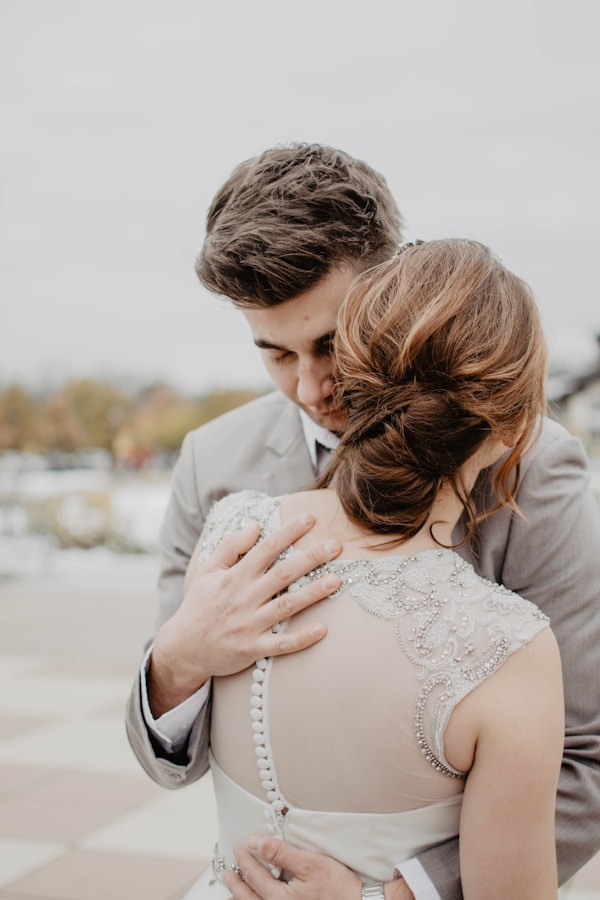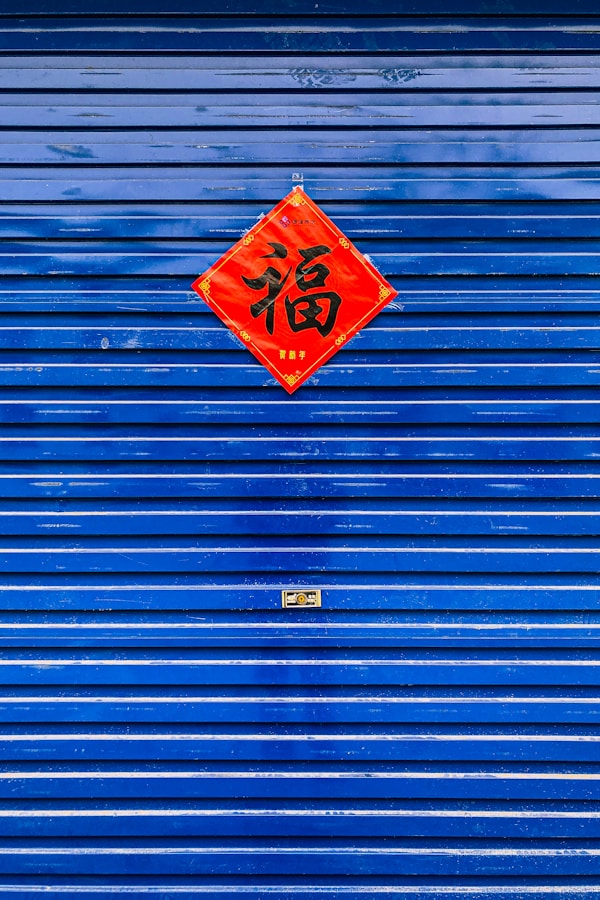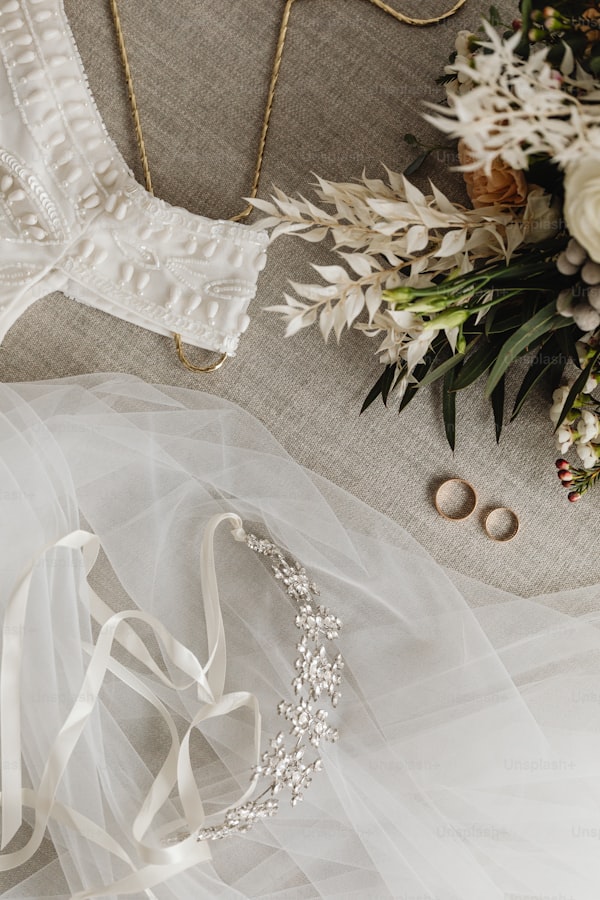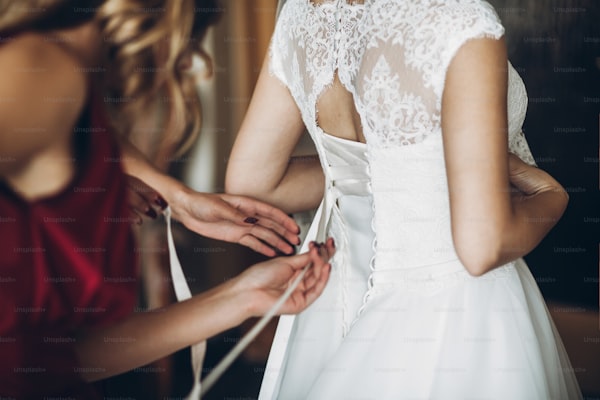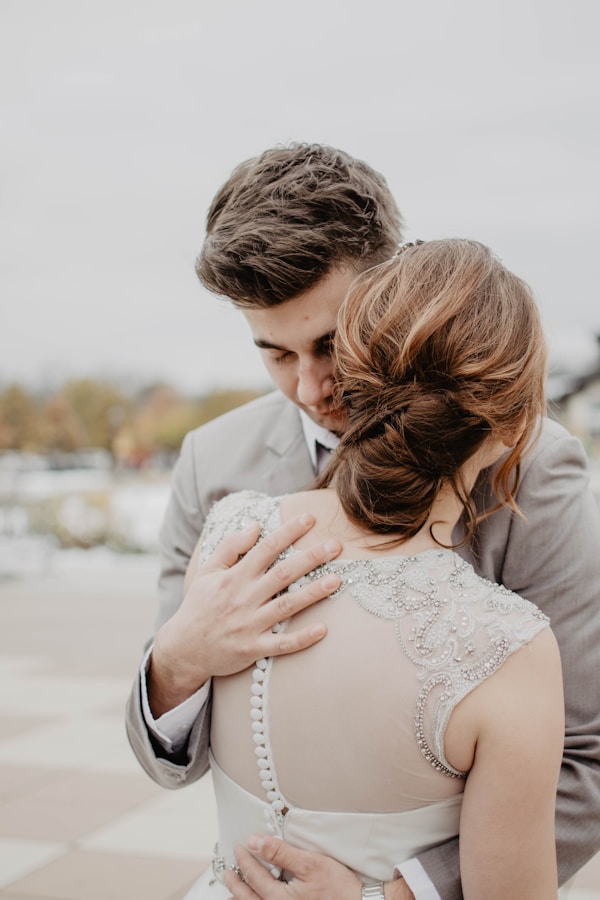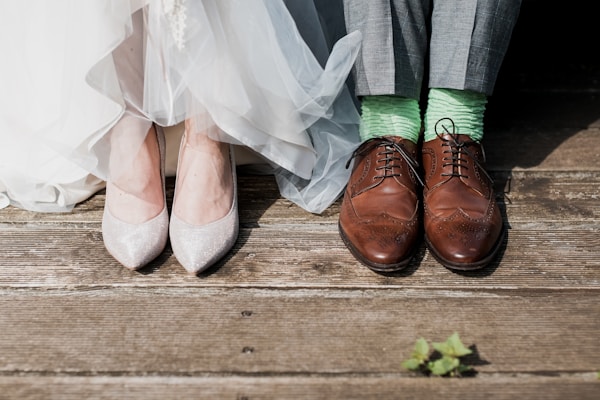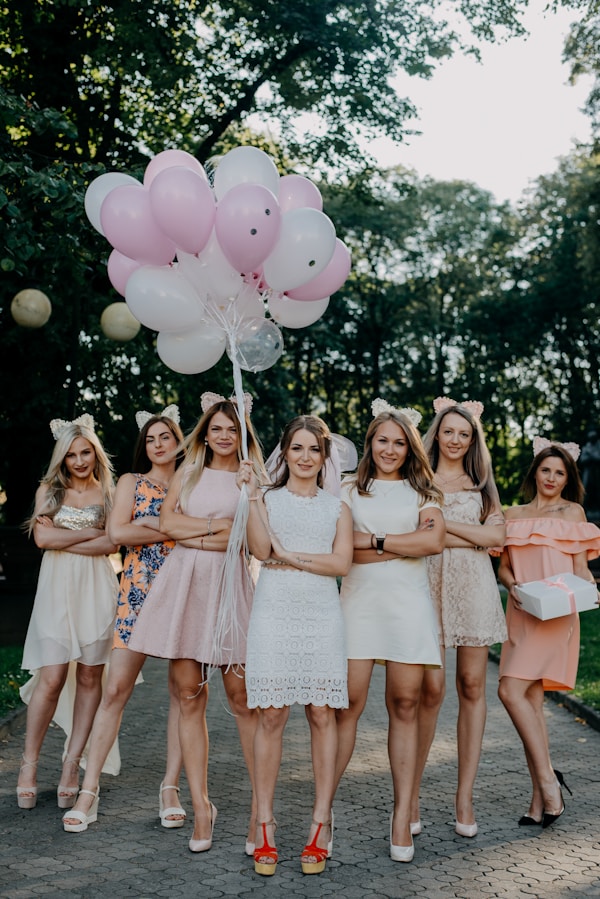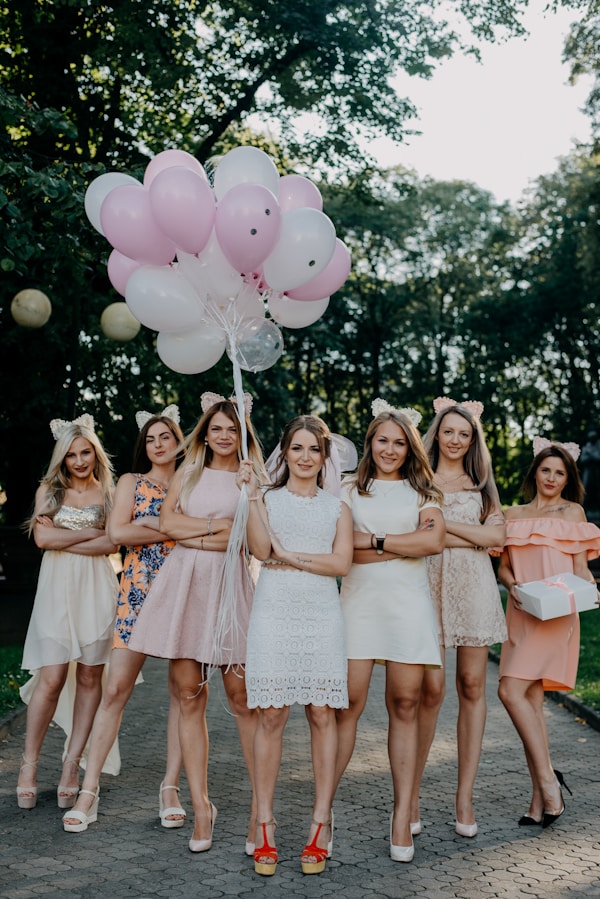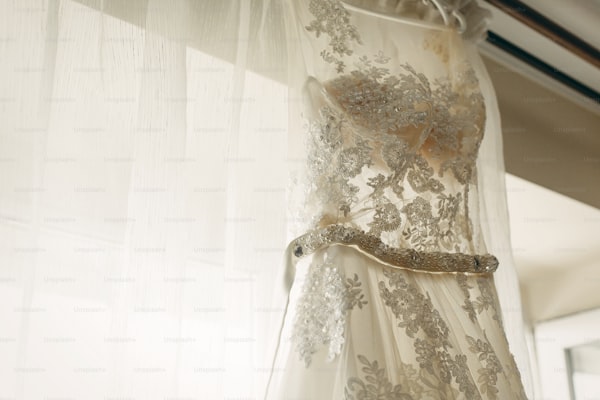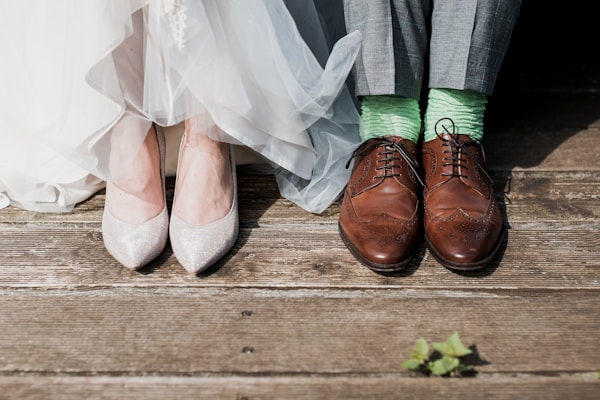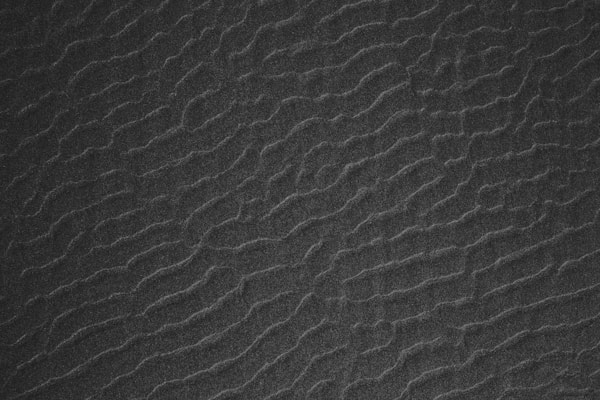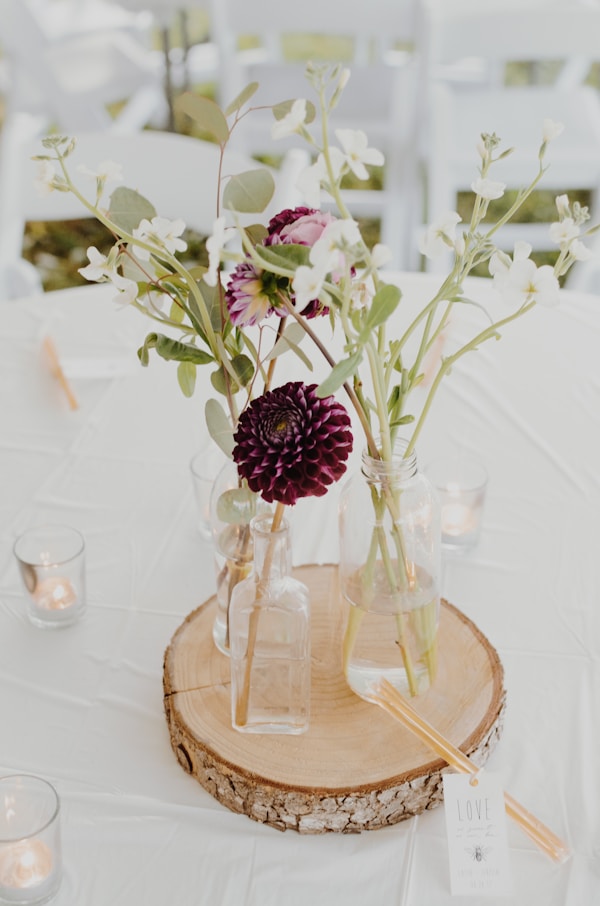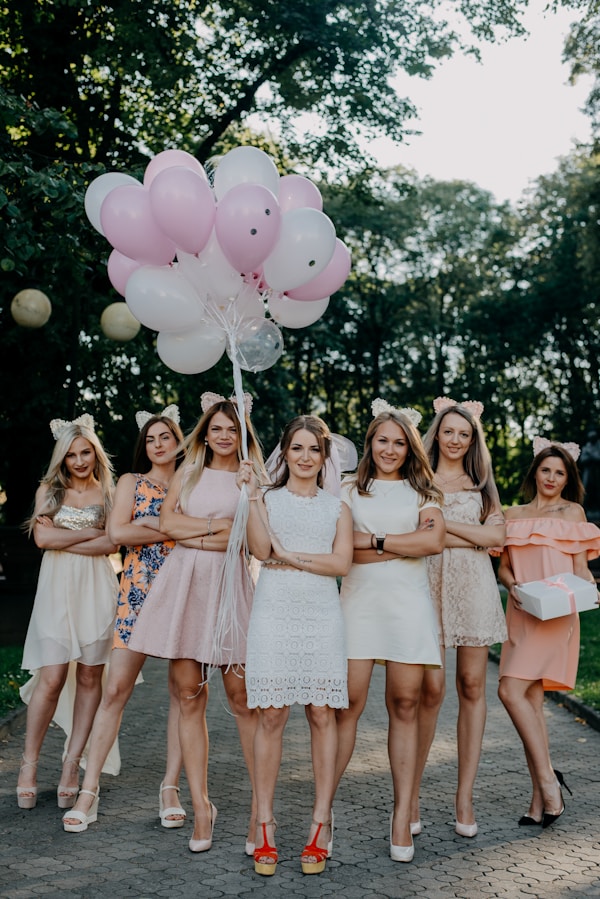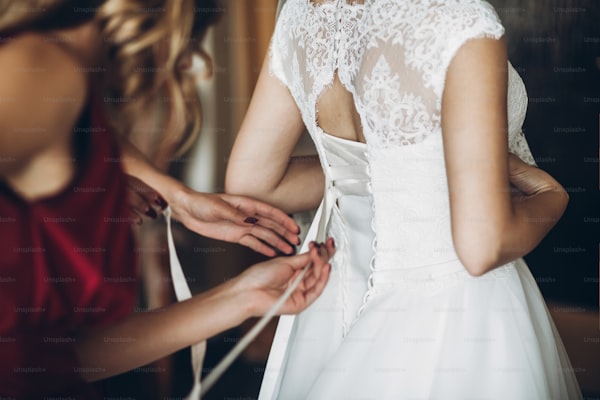How to Preserve the Color Integrity of Fabrics in Wedding Dresses
IntroductionWedding dresses are not just garments; they symbolize love, commitment, and personal style. One of the vital aspects of these dresses is the color integrity of their fabrics, which can make or break the overall aesthetic. Whether you are a designer, a bride-to-be, or a wedding planner, understanding how to maintain the vibrancy and purity of fabric colors is crucial. This article will explore various methods and tips to help you maintain the color integrity of fabrics used in wedding dresses, ensuring that they remain stunning throughout the wedding and beyond.Understanding Fabric Types and Their ColorsDifferent fabrics have varying characteristics that can affect how well they hold color. Knowing the type of fabric is the first step to understanding how to maintain its color integrity. Some common fabrics used in wedding dresses include:Fabric TypeCharacteristicsColor IssuesSatinSmooth and glossyProne to fadingLaceDelicate and intricateDiscoloration over timeTulleLight and airyYellowingSilkLuxurious feelWater spots, fadingBy recognizing the characteristics and potential color issues of each fabric type, you can implement the appropriate maintenance strategies.Proper Storage TechniquesStorage plays a significant role in maintaining the color integrity of wedding dress fabrics. Here are some essential tips:Avoid Direct LightLight can cause colors to fade over time. Store your wedding dress in a dark, cool place, away from direct sunlight. Use a breathable garment b...
Steps to Create a Unique Wedding Dress with Layered Textures
Crafting Your Dream Wedding Dress: Layered Textures Explained Planning a wedding is often a whirlwind of excitement and creativity, especially when it comes to choosing a wedding dress. For brides looking to stand out on their special day, creating a unique wedding dress with layered textures can be an extraordinary journey. This article will guide you through the essential steps to craft a stunning gown that perfectly embodies your personality and style. Understanding Layered Textures Before diving into the creation process, it's crucial to grasp what layered textures truly mean in wedding dress design. Layered textures involve combining different fabrics, patterns, and embellishments to create depth and dimension in a dress. This technique can result in a one-of-a-kind look, giving your wedding gown character and uniqueness. The Importance of Choosing the Right Fabrics When creating a unique wedding dress with layered textures, selecting the appropriate fabrics is a vital first step. Here are some popular fabric choices: FabricTextureCharacteristics SatinSmoothLuxurious shine, soft drape LaceIntricateDelicate patterns, vintage feel TulleSheerLightweight, ethereal quality OrganzaCrispStructural, holds shape well ChiffonFluidSoft, flowing movement Step-by-Step Process to Create Your Wedding Dress Now that you understand the importance of fabric selection, let’s outline the steps for creating your wedding dress with layered textures: Step 1: Conceptualizati...
Creating the Perfect Marriage: Designing a Wedding Dress that Blends Traditional and Modern Elements
IntroductionWhen it comes to designing a wedding dress, the journey is as important as the final creation. The perfect gown should reflect the bride's unique personality while harmoniously blending traditional and modern elements. In this article, we will explore various aspects of this design process, offering valuable insights for brides-to-be and aspiring designers alike.Understanding Traditional and Modern ElementsBefore diving into the design process, it's crucial to define what we mean by "traditional" and "modern" in the context of wedding dresses. Traditional wedding dresses often feature classic silhouettes, intricate lacework, and timeless embellishments. These gowns are rich in cultural significance and often reflect the customs and heritage of the bride's family.On the other hand, modern wedding dresses tend to emphasize contemporary fashion trends, bold colors, and innovative fabrics. They can include unique cuts, minimalist styles, and unexpected details that break away from conventional norms. The challenge lies in finding a design that harmoniously marries these two styles.Design Elements to ConsiderWhen designing a wedding dress that integrates traditional and modern elements, consider the following design aspects: Silhouette: Traditional dresses often have classic A-line or ball gown silhouettes, while modern dresses might adopt sheath or high-low cuts. Combining these styles can lead to a striking design. Fabrics: Lace, silk, and satin evoke tradition...
Creating a Stunning Wedding Dress: Techniques for a Dramatic Cape
Introduction to Wedding Dress DesignThe wedding dress is a pivotal part of the bridal experience, often embodying a bride's personality and style. One of the most sought-after features in wedding gowns today is the dramatic cape. This elegant addition can transform a simple dress into a breathtaking creation. In this article, we will explore the techniques used to create a wedding dress with a dramatic cape and the elements that make them so appealing.The Allure of the Cape in Wedding DressesBrides around the world are increasingly incorporating capes into their wedding attire for various reasons. A dramatic cape can enhance the overall silhouette, add an element of surprise, and often comes with rich cultural significance. From medieval influences to modern interpretations, the cape symbolizes elegance and grandeur.Historic InfluencesThe cape has a history rooted deep in fashion. Historically, capes were worn by nobility and were often made from luxurious fabrics such as silk, velvet, and lace. By incorporating these materials into a wedding gown, bridal designers pay homage to past elegance while providing contemporary brides with modern style.Techniques Used in Creating a Wedding Dress with a Dramatic CapeCreating a wedding dress that features a dramatic cape involves several key techniques, merging artistry with craftsmanship. Below are some widely used methods:TechniqueDescriptionFabric SelectionChoosing high-quality, lightweight fabrics that drape beautifully, such as c...
Mastering Adjustments for a Wedding Dress with a High Slit: Tips and Tricks
IntroductionWhen it comes to choosing the perfect wedding dress, many brides lean toward stylish options that feature bold designs. One such choice gaining popularity is the wedding dress with a high slit. This design adds a daring touch while still maintaining elegance, allowing brides to showcase their legs and add a bit of glam to their overall look. However, a wedding dress with a high slit can pose various challenges, particularly when it comes to adjustments. This article explores how do you handle adjustments for a wedding dress with a high slit? and provides essential tips to ensure a perfect fit on your special day.Understanding the Design: What is a High Slit?A high slit wedding dress typically features a long opening along the side or front of the dress, running from the hem to mid-thigh or higher. While this design can enhance mobility and bring a touch of modern flair, it is crucial to manage the adjustments wisely to maintain both style and comfort. Here are several key points to consider when adjusting a wedding dress with a high slit:1. Evaluating the Fabric TypeThe type of fabric can significantly affect the adjustments needed. Some fabrics, like chiffon and silk, drape beautifully, while others like taffeta may need different handling techniques. The adjustments you make should always take into account how the chosen fabric will react to any alterations.2. Consider Your Body ShapeEvery bride has a unique body shape, and this should inform adjustments for the...
Essential Guide: How to Manage Alterations for a Wedding Dress with a Plunging Neckline
Understanding the Importance of Proper Dress AlterationsWhen it comes to brides on their special day, every detail matters—especially the wedding dress. A dress with a plunging neckline can be both glamorous and challenging, as it requires careful alterations to ensure it fits perfectly and looks stunning. This article explores how to manage alterations effectively while addressing common questions brides may have about this specific style.What Are the Common Alterations for a Wedding Dress?Wedding dress alterations can vary based on individual needs, but most brides will require some common adjustments. Here’s a look at these alterations:Alteration TypeDescriptionHem LengthAdjusting the length to suit the bride's height and shoe choice.Waist AdjustmentTaking in or letting out the waist for a secure fit.Bust AdjustmentModifications for better support and comfort, especially important for plunging necklines.Strap AdjustmentsShortening or lengthening straps to provide adequate support.Side SeamsAdjusting side seams for a tailored silhouette.Why Focus on the Plunging Neckline?A plunging neckline adds a touch of drama and elegance to a wedding dress. However, it also requires extra attention during alterations due to its design. The key considerations for managing alterations on a dress with this neck feature include:Support: Ensuring the neckline stays secure is crucial for comfort and style.Correct Fit: The dress should fit snugly without causing discomfort or wardrobe malfunct...
What Are the Best Practices for Designing a Wedding Dress with Statement Sleeves?
Understanding Statement Sleeves in Wedding Dress DesignWedding dresses are not just garments; they represent a profound expression of love, style, and individuality. Among the many elements that contribute to a striking wedding dress, statement sleeves have risen to become a defining feature that exudes elegance and personal flair. In this article, we will delve into the best practices for designing wedding dresses with statement sleeves, considering various styles, materials, and design techniques that enhance their visual appeal.Why Choose Statement Sleeves?Statement sleeves can transform a simple wedding gown into a fashion statement. They draw attention, create movement, and offer brides the opportunity to showcase their unique style. Here are some reasons why statement sleeves are becoming increasingly popular: Trendsetting Fashion: Brides are looking to stand out, and bold sleeves are an excellent way to achieve that. Versatility: Statement sleeves come in various styles – from puffed to bell, each bringing a different mood to the wedding dress. Photogenic Appeal: Dramatic sleeves add a layer of depth to photographs, capturing the beauty of the moment from every angle.Best Practices for Designing Wedding Dresses with Statement SleevesDesigning a wedding dress with statement sleeves requires a thoughtful approach. Here are some best practices to consider for creating stunning gowns.1. Color and Fabric SelectionThe fabric choice significantly affects how the slee...
Mastering the Art of Working with Delicate Wedding Dress Trims: Preventing Snagging
IntroductionWedding dresses are often the epitome of elegance, intricately adorned with delicate trims that enhance their beauty. However, working with these fine materials poses challenges, notably the risk of snagging. In this article, we will discuss comprehensive strategies on how to prevent snagging when working with delicate wedding dress trims, ensuring that your crafting experience is seamless and successful.Understanding Delicate Wedding Dress TrimsWedding dress trims can vary greatly in terms of materials and styles. Common types include lace, satin, organza, and beading, each requiring special attention. Understanding the characteristics of these materials is crucial in preventing snagging. For example, lace is prone to tearing and snagging if not handled carefully, while satin can easily catch on rough surfaces.Common Types of Delicate TrimsTrim TypeCharacteristicsSnagging RisksLaceSheer, intricate, often requires special handlingProne to tearing and snagging on rough surfacesSatinSmooth, glossy finish, can slide easilyCan catch on nails or sharp edgesOrganzaLightweight, stiff fabric, adds volumeCan easily be pulled and snaggedBeadingDecorative embellishments, often heavyCan catch on fabric and create pullsEssential Techniques to Prevent SnaggingPreventing snagging when working with delicate wedding dress trims requires a combination of proper techniques, tools, and precautions. Here are some valuable tips to keep in mind:1. Use the Right ToolsInvesting in high-qu...
Unveiling the Versatility of Wedding Dresses: Techniques for Creating a Detachable Train
Introduction to Wedding Dress VersatilityWedding dresses are not just mere garments; they symbolize love, commitment, and the beginning of a new journey. Among the myriad styles available, the wedding dress with a detachable train has gained immense popularity due to its versatility. But what techniques are used to create such exquisite pieces? In this article, we will explore the artistry behind creating a detachable train, the benefits it offers, and tips for brides considering this magnificent option.The Art of Designing a Detachable TrainCreating a wedding dress with a detachable train requires a fusion of creativity and technical skill. Designers employ several techniques to ensure that the dress not only looks stunning but also offers functionality. Here are some prominent methods:1. Attachment SolutionsOne of the primary concerns in designing detachable trains is how to attach and detach them seamlessly. Various innovative solutions can be employed:Hooks and Eyes: This traditional method involves sewing small hooks and corresponding eyes into the dress and train, allowing for easy attachment and removal.Snap Fasteners: Snap fasteners provide a quick way to attach the train and can be hidden for a clean finish.Bodice Loops: Creating small loops on the bodice of the dress allows for the train to be effortlessly tied or hooked, providing both security and elegance.2. Fabric SelectionThe choice of fabric significantly influences the design and functionality of a detachable...
Achieving the Dreamy Soft, Flowing Look in Wedding Dresses with Lightweight Fabrics
When it comes to wedding dresses, many brides envision a gown that embodies romance and elegance. The combination of lightweight fabrics with expert design techniques can create that ethereal, soft, flowing look, making any bride look breathtaking on her special day. In this article, we will explore how to achieve this stunning aesthetic using various lightweight fabrics, discuss suitable styles, and share tips that cater specifically to brides who are keen on a softer silhouette.The Allure of Lightweight FabricsLightweight fabrics are often the best choice for brides looking to create a soft and airy silhouette. Not only do they lend themselves to flowing designs, but they are also comfortable and breathable, important factors for a long day of celebration. Some of the most popular lightweight fabrics include: Chiffon: A sheer, delicate fabric that moves beautifully with the body. Organza: A lightweight, crisp fabric that adds structure while maintaining a flowy appearance. Tulle: Perfect for layering, creating soft volume without adding weight. Lace: Often used as an overlay, lace adds texture and elegance. Silk: Known for its luxurious feel and natural drape, silk is a staple for elegant gowns.Choosing the Right SilhouetteThe silhouette of your wedding dress plays a crucial role in achieving that soft and flowing look. Here are a few styles to consider:SilhouetteDescriptionA-LineA fitted top gradually flares out to form an A-shape, ideal for a soft look.Ball...
Designing a Wedding Dress with Intricate Beadwork: Balancing Beauty and Comfort
Creating a wedding dress is one of the most exciting yet challenging tasks for any designer. One of the significant questions that arise during the design process is: How do you design a wedding dress with intricate beadwork without compromising comfort? This article explores the art of designing such a dress while maintaining an ideal balance between style and comfort.The Essence of Wedding Dress DesignWedding dresses have evolved through centuries. From the simple, flowing gowns of the past to today’s elaborate designs full of intricate details, designers face the task of incorporating both stunning aesthetics and wearability. The primary goal should be to make the bride feel beautiful and comfortable on one of the most important days of her life.Understanding BeadworkBeadwork adds a luxurious and eye-catching element to any garment, especially wedding dresses. However, the challenge lies in how to incorporate it seamlessly without sacrificing comfort. Here are some key factors to consider:FactorDescriptionWeight of BeadsChoosing lightweight beads can reduce the overall weight of the dress.Fabric ChoiceSoft, breathable fabrics can enhance comfort while showcasing beadwork.Bead PlacementStrategically placing beads in less-frequented areas can prevent discomfort.Movement ConsiderationsEnsuring the dress allows for fluidity and ease of movement is crucial.Choosing the Right FabricsThe foundation of any stunning wedding dress begins with the right choice of fabric. Some popular...
What Are the Steps for Creating a Mermaid-Style Wedding Dress? Your Ultimate Guide
Planning a wedding involves countless details, and one of the most important decisions for brides is choosing the perfect wedding dress. Among the myriad styles available, a mermaid-style wedding dress stands out for its flattering silhouette and modern look. This article will guide you through the steps for creating a beautiful mermaid-style wedding dress, ensuring your big day is as special as you've always dreamed.What Is a Mermaid-Style Wedding Dress?A mermaid-style wedding dress is characterized by its fitted bodice that flares out at or below the knee, resembling the shape of a mermaid’s tail. This style accentuates the curves and creates a dramatic effect as you walk down the aisle. Before diving into the steps of creating your own, it is essential to understand the different components that make up this iconic dress.Components of a Mermaid-Style Wedding DressComponentDescriptionBodiceFitted and often adorned with lace, beading, or other detailing.SkirtFlares out from the knee, creating a dramatic shape.TrainA longer back portion that adds elegance and drama.FabricCommon fabrics include satin, tulle, and lace for a luxurious feel.Step 1: Choose Your InspirationStart by gathering inspiration for your dress. Browse through wedding magazines, websites like Pinterest, or even bridal fashion shows. Consider what elements appeal to you, such as lace detailing, silhouette, neckline, and sleeve options. Save your favorite images and note down the specific aspects you love.Step...
How to Ensure a Perfect Fit for Your Wedding Dress After Significant Weight Changes
Planning for a wedding is an exciting time filled with joy and anticipation. Among the myriad of preparations, finding the perfect wedding dress stands out as one of the most crucial aspects. However, what happens when you experience significant weight changes before your big day? This article will guide you on how to ensure your wedding dress fits properly, even after you’ve undergone substantial shifts in your body weight.1. Understanding the Importance of a Proper FitA well-fitted wedding dress is essential for both comfort and aesthetics. A gown that fits incorrectly can detract from the beautiful design and may hinder your movement throughout the event. Moreover, it can affect your confidence as you walk down the aisle. Following weight changes, it’s crucial to assess your body and ensure your dress accommodates these changes.Why Weight Changes OccurWeight changes can occur for various reasons, and understanding these can help you prepare for your wedding dress fitting: Dietary Changes: Alterations in your diet can lead to rapid weight loss or gain. Exercise Regimens: Starting a new workout program may result in muscle gain or fat loss. Stress: Planning a wedding can be stressful, often leading to weight fluctuation. Health Issues: Hormonal changes or other medical conditions may affect body weight.2. Initial Steps to Take After Weight ChangesOnce you notice weight changes, here are some steps to help ensure your wedding dress will fit properly:Check Your Measurement...
Mastering the Art of Detachable Wedding Dress Trains: Techniques, Benefits, and Common Questions
Introduction to Detachable Wedding Dress TrainsWeddings are special, and every bride dreams of looking perfect on her big day. One aspect that can add elegance to a wedding dress is a train. However, the charm of a train can sometimes come with practical considerations. This is where detachable wedding dress trains come into play. In this article, we will explore the various techniques used to create detachable wedding dress trains, their benefits, and some common questions surrounding them.Why Choose a Detachable Train?A detachable train offers the best of both worlds: the dramatic effect of a long train during the ceremony and the convenience of a shorter dress for the reception. This versatility allows brides to make the most of their wedding gown.Common Techniques for Making a Wedding Dress Train DetachableThere are various methods employed by designers to create detachable trains. Here are some of the most popular techniques:TechniqueDescription1. Hooks and EyesThis is one of the most common methods where hooks and eyes are sewn into the fabric. The train can be secured at the waist, ensuring it stays in place during the ceremony.2. Snap ButtonsSnap buttons can provide a strong hold for the train and are often used for a clean finish. They can be added discreetly to keep the focus on the gown.3. Ties or RibbonsUsing ties or ribbons gives a softer look. These can be hidden within the dress and tied at the waist for a secure fit.4. ZippersSome designs incorporate zippers t...
How to Balance Modern Trends with Timeless Styles in Wedding Dress Design
Understanding the Essence of Wedding Dress DesignWedding dress design is a delicate interplay between modern trends and timeless styles. As the fashion industry continually evolves, brides are often left wondering how to embrace contemporary fashions while ensuring their wedding dress will remain elegant and relevant for years to come. In this article, we will explore the essential approach to striking a balance between modernity and tradition in wedding dress design, while providing insights into various aspects that brides should consider when selecting their dream dress.The Influence of Modern TrendsModern trends in wedding dress design often reflect broader shifts in societal values and cultural norms. For instance, the rise of body positivity has led to increased demand for diverse sizes and styles. Additionally, more brides are seeking dresses that defy traditional wedding dress norms, opting for non-white colors, unique fabrics, and bold silhouettes. Key trends currently shaping the market include:TrendDescriptionBohemian StylesLoose-fitting, flowy designs, often with lace and floral details.JumpsuitsA modern twist, providing a chic alternative to the traditional gown.Bold ColorsBrides are increasingly opting for colors like blush, navy, and even black.Minimalist DesignsSimple and elegant styles that focus on fabric quality and cut.Incorporating Timeless StylesWhile modern trends offer fresh perspectives, timeless styles have their charm that remains appealing across g...
Unlocking the Secrets: Methods for a Smooth Finish on Satin Wedding Dresses
What Methods are Used to Create a Smooth Finish on a Satin Wedding Dress?When it comes to weddings, every detail matters, especially the bride's gown. Satin wedding dresses are renowned for their luxurious and elegant appearance, yet achieving a flawless finish can be quite the challenge. This article will explore various methods used to create a smooth finish on satin wedding dresses, helping brides achieve their dream look for the big day.Understanding SatinSatin is a weave that creates a luxurious fabric with a glossy surface. It is often made from silk or polyester, providing a stunning aesthetic that many brides love. However, its smooth surface can also highlight imperfections, making it essential to understand how to achieve that perfect finish.Common Concerns with Satin FinishingBefore diving into methods, it's important to recognize common issues brides face with satin dresses: Wrinkles: Satin is prone to wrinkling, which can detract from its shine and overall look. Seams: Uneven seams can create an unprofessional appearance. Stains: Satin is sensitive to stains, which can be challenging to remove.Methods for Achieving a Smooth FinishTo ensure your satin wedding dress looks flawless, consider the following methods:1. Professional TailoringOne of the most effective ways to achieve a smooth finish is to enlist the help of a professional tailor. Expert seamstresses understand the intricacies of satin and can expertly alter your dress to ensure perfect seams and fit....
How to Select the Right Thread for Sewing a Wedding Dress: A Comprehensive Guide
Sewing a wedding dress is a monumental task that requires attention to detail and careful consideration of materials, especially thread. The thread you choose is crucial for the integrity, appearance, and overall quality of the dress. In this article, we will explore how to select the right thread for sewing a wedding dress, addressing important factors such as thread type, color matching, fabric compatibility, and sewing techniques.Understanding Thread TypesBefore diving into the selection process, it's essential to understand the different types of threads available in the market. Each type serves a unique purpose and is suitable for specific fabrics. Here’s a quick overview:Thread TypeBest ForCharacteristicsPolyester ThreadMost fabricsStrong, durable, and resistant to fadingCotton ThreadCotton fabricsSoft, natural look; can be less durableNylon ThreadStretchy fabricsFlexible and strong, great for fitted garmentsSilk ThreadLuxury fabricsLuxurious, smooth finish; ideal for delicate fabricsChoosing the Right Thread TypeChoosing the right thread type is the first step in ensuring your wedding dress turns out beautifully. For most wedding dresses, polyester thread is often the go-to choice due to its strength and versatility. It works well with various fabrics, making it suitable for the layers often found in wedding dresses.If your dress features delicate silk or satin, then silk thread is an ideal choice to complement the luxurious feel and drape of these fabrics. On the othe...
Unlocking Unique Fabric Textures: Techniques for Creating Stunning Wedding Dresses
Introduction to Unique Fabric Textures in Wedding DressesWhen it comes to wedding dresses, the fabric texture plays a crucial role in creating a bridal masterpiece that stands out. Designers and brides alike often seek out ways to achieve unique and exquisite fabric textures that reflect personal style and elevate the overall aesthetic. But what techniques are employed to create a wedding dress with a unique fabric texture? In this article, we will explore various techniques, materials, and creative inspirations that lead to those coveted textures in wedding gowns.Understanding Fabric Texture: The Foundation of a Stunning Wedding DressFabric texture refers to the surface quality of the material used in clothing, which can be visual, tactile, or both. For a wedding dress, the right fabric texture can enhance its elegance, add depth, and even portray a specific mood or theme. Several factors come into play, including the type of fabric, the weaving techniques, and the finishing methods. Let’s delve deeper into some of the most popular techniques used to create unique fabric textures.1. Weaving TechniquesWoven fabrics are a staple in bridal fashion. The method of weaving can significantly affect the texture of the fabric. Here are some commonly used weaving techniques:TechniqueDescriptionMikadoA blend of silk and nylon that adds structure and creates a crisp texture.Chantilly LaceIntricate lace with a delicate floral pattern, often used as overlays for a romantic touch.JacquardA...
How to Prevent Tulle from Tearing in a Wedding Dress: Essential Tips and Techniques
IntroductionWeddings are one of the most important milestones in a person's life, and the wedding dress holds a significant place in this beautiful occasion. Tulle, a delicate and lightweight fabric often used in wedding dresses, adds an ethereal touch to the overall design. However, its sheer nature makes it susceptible to tearing. In this article, we will explore effective methods to prevent tulle from tearing in a wedding dress, while also addressing common concerns and questions regarding tulle maintenance.Understanding Tulle and Its Common IssuesTulle is a net-like fabric typically made from nylon, polyester, or silk. It is favored for its lightness and versatility, often used in skirts, veils, and decorations. However, due to its fragile composition, tulle can easily snag or tear, especially in high-stress areas such as seams or edges. Some common factors contributing to tulle tearing include: Friction: Excessive rubbing against other fabrics or surfaces can weaken tulle over time. Improper Storage: Folding or mishandling tulle can lead to creases that may cause tearing. Fastening Techniques: Using the wrong methods to secure tulle can create undue stress on the fabric.Preventative Measures for Tulle TearingBelow are several practical tips to help you preserve the integrity of tulle in your wedding dress:MethodDescription1. Choose Quality TulleOpt for thicker tulle made from durable materials to reduce the risk of tearing.2. Proper Store Your DressHang your wed...
Essential Considerations for Designing a Wedding Dress for Colder Climates
When planning a winter wedding, choosing the right wedding dress is critical. Couples often focus on venues, catering, and guest lists, but the bride's attire deserves equally careful consideration. Especially in colder climates, where temperatures can drop significantly, the design of the wedding dress can impact not only the aesthetic appeal but also the comfort of the bride. In this article, we will explore the key considerations for designing a wedding dress suitable for colder climates and provide helpful tips for brides-to-be.Factors to Consider When Designing a Wedding Dress for Cold WeatherDesigning a wedding dress for colder climates necessitates a careful balance between style, warmth, and comfort. Below are some vital factors to consider:1. Fabric ChoiceThe fabric of the wedding dress is the most crucial factor when it comes to warmth. Consider materials that are thicker and more insulating. Here are some fabric suggestions:FabricDescriptionVelvetA luxurious fabric that provides warmth and richness in texture.BrocadeHeavy jacquard fabric, perfect for creating structured and opulent designs.Lace with LiningBeautiful for details, but ensure it has a warm lining to combat cold.Silk SatinLightweight but can be layered for added warmth while maintaining elegance.2. Dress LengthA longer dress not only adds elegance but also provides more coverage. Consider the following styles:Full-Length Gowns: Ideal for covering more skin, keeping the bride warmer.Three-Quarter Sleeves...
